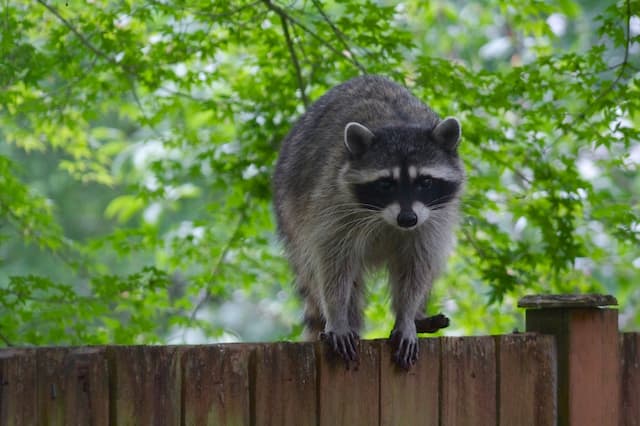Are you tired of the noisy and destructive raccoons that have invaded and destroyed your yard, emptied your bird feeders and knocked over your trash cans? Raccoons are nuisance pest species that have habits of living in human dwellings and are known to cause a lot of mess and damage to the yard and property if uncontrolled. Unfortunately, most people rarely understand what they need to do to control raccoons in the long term making the invasion a perennial problem that they have to deal with now and then. The best raccoon control measure is to devise a strategy that will help you get rid of raccoons in the long term, which is only possible if you take the time to understand their habitat, skills and effective long-term removal remedies that will stop making your property attractive to them.
Raccoons thrive in areas that are heavily wooded with abundant trees and vegetations and with access to water, but they also live in urban and suburban areas as they are highly adaptable. In homes, they usually live in the attics, chimneys, sewers, and areas beneath porches and outbuildings. They are also intelligent animals with excellent climbing skills and can open bottles, jars and doors to find shelter and food.
Raccoons have a broad range of sources of foods that include plants and animals as they are omnivores. Some of the raccoon plant-based food sources include fruits, berries, seeds, grains, and nuts. Some of the animal-based food sources for raccoons include fish, snails, insects, crawfish, frogs, and mice among others. The raccoons live within their family groups and tend to mate from February to March with the females carrying the young ones for about 60 days. A standard female usually produces three to five young ones that take approximately two months before they can begin to accompany their mother to find food.
Tips that keep Raccoons away from your property in the long term
The best way to keep raccoons from your property in the long term is through exclusion and habitat modification. You can modify the habitat by sealing any part that offers raccoons access to your property. Raccoons can enter your property through holes of about four inches in diameter or damaged roofs, siding, and gables or under soffits. You can also install caps to cover the chimney and other roof vents.
Once you modify the habitat, you should then reduce available food sources. You can reduce food sources by keeping your trash cans clean and removing all leftovers in the compound. You should also limit the available water sources by draining water ponds in the compound and keeping other necessary water pools covered.
